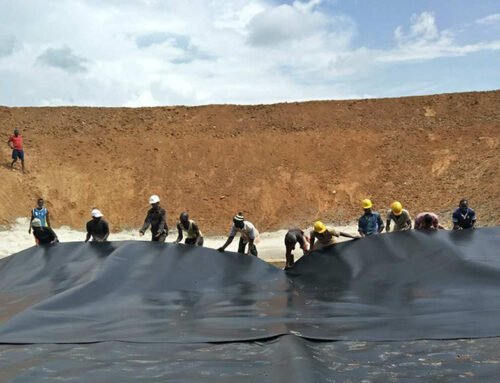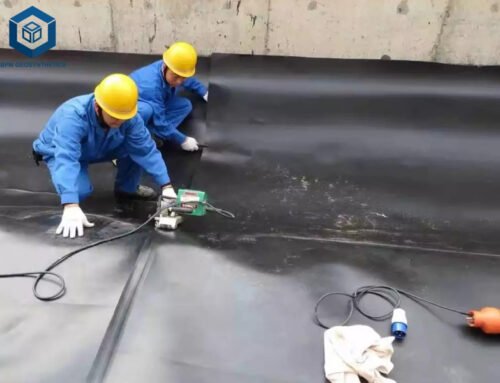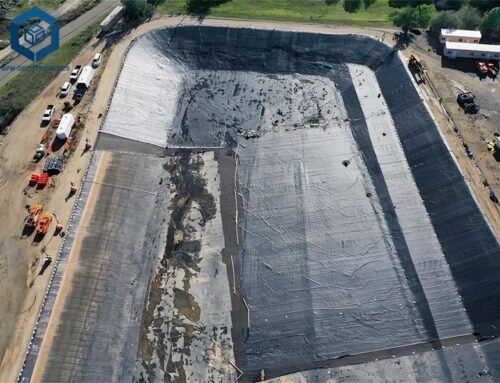HDPE poly lock, also known as HDPE polylock, is a robust and long-lasting HDPE profile that can be embedded in wet concrete or cast-in-place, with the welding surface exposed after concrete preparation. The anchor fingers embedded in it create a strong mechanical anchor to the concrete. When installed correctly and used in conjunction with a HDPE geomembrane, the HDPE poly lock offers excellent leakage prevention, acting as an effective barrier.
As the leading geomembrane maunfacturer and supplier, BPM Geomembrane offers custom geomembranes and HDPE poly lock at competitive factory price to meet you specific requirements. In this article, let us delve into the definition, functions, benefits, and the selection of HDPE poly lock. We think it will help you choosing the right HDPE poly lock for your specific projects.
In this article, let’s explore the definition, benifits, selection, installation of HDPE poly lock.
1. What Is HDPE Poly Lock?
HDPE PolyLock is an extruded HDPE strip product with an E-shaped cross-section, specifically designed for secure anchoring in concrete. Made from the same polyethylene material as geomembranes, its welding surface is exposed, allowing for the welding of the HDPE lining onto its smooth surface to connect the geomembranes and the concrete.
PolyLock is a rugged and durable HDPE product engineered to set and anchor geomembranes in wet concrete. The T-shaped anchor fingers embedded in the product create a high-strength mechanical anchor in the concrete, while the exposed HDPE surface enables the welding of the geomembrane to the PolyLock. This system is widely recognized as the most effective method for terminating HDPE barriers available in the market today.
With the embedment of anchor fingers, PolyLock provides a robust mechanical anchor to the concrete. When properly installed and used in combination with a geomembrane, it offers an exceptional barrier against leakage. It is considered the most efficient and cost-effective cast-in-place mechanical anchor system for HDPE.
HDPE PolyLock is commonly used in soil engineering and environmental protection, typically manufactured from high-density polyethylene (HDPE). Its unique structure and design allow it to form an effective barrier in the soil, preventing the infiltration of soil particles and moisture.
The design concept of PolyLock involves folding the edges of the geomembrane into an E-shape and connecting them together through hot-melt welding or mechanical locking, creating a secure connection system. This enhances the strength and stability of the geomembrane, enabling it to withstand greater tensile and shear forces, thereby improving its overall performance and service life.
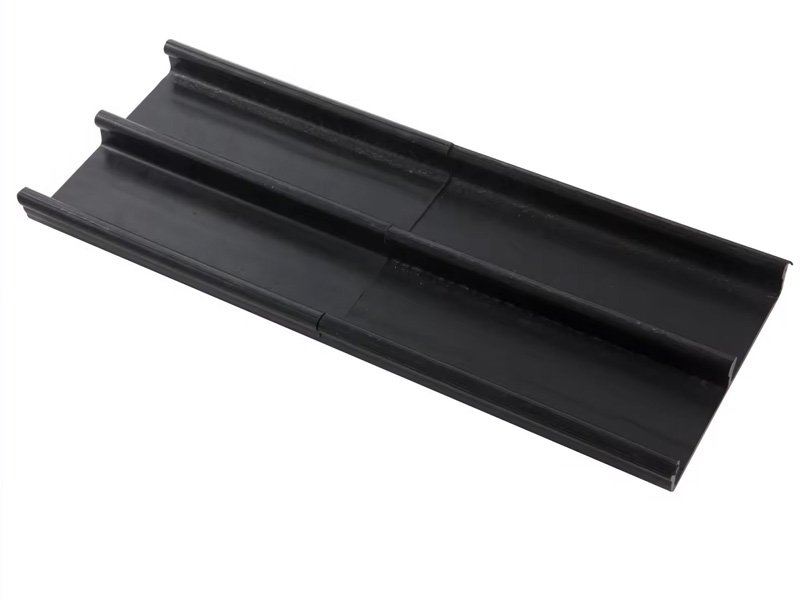
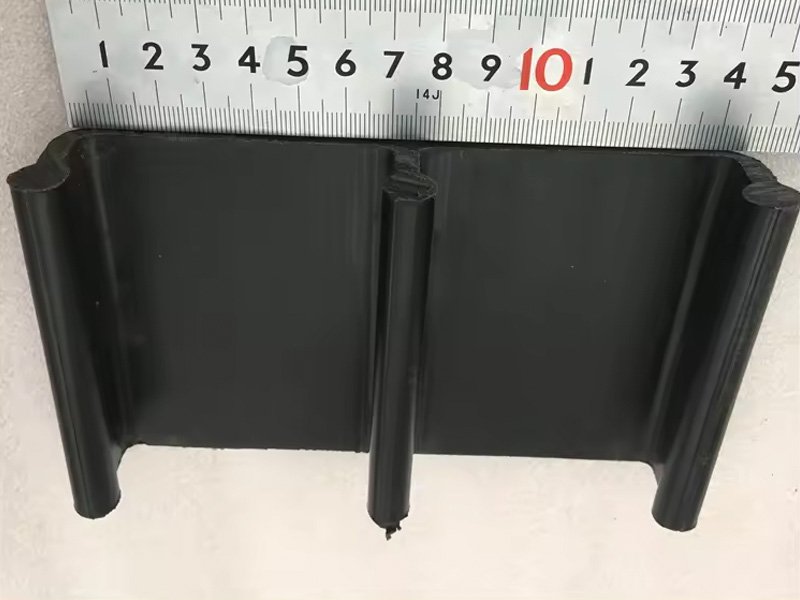
2. Specificationsof BPM HDPE Poly Lock
| 1 | Material | High Density Polyethylene (HDPE), Same material as geomembrane |
| 2 | Length | 3000 mm, Customization or OEM availability |
| 3 | Width | Model EPL100, EPL150, EPL200 (The Width is 100, 150 or 200mm) |
| 4 | Height | 30mm, Customization available |
| 5 | Thickness | 4-6mm, Customization available |
| 6 | Tensile Strength at tear | 25 Mpa |
| 7 | Tensile Strength at break | 20 Mpa |
| 8 | Break Elongation | 7 |
| 9 | Low temperature brittleness | -70°C |
3. What Are Benefits of Poly Lock?
HDPE poly lock plays a crucial role in connecting geomembrane with concrete in soil engineering and environmental protection. It prevents soil erosion, controls water infiltration, filters impurities, and provides a barrier for soil. Its utilization enhances soil stability, improves project performance, and safeguards the environment against soil pollution and erosion.
3.1 Prevention of Soil Erosion
The primary function of HDPE poly lock is to prevent soil erosion. By effectively impeding the flow of water and sediment through the soil layer, it reduces or prevents the erosion of riverbanks, riverbeds, and soil slopes. This helps maintain the stability and structural integrity of the soil.
3.2 Control of Water Penetration
HDPE poly lock acts as a moisture barrier, controlling the free penetration of water into the soil. This feature is beneficial in projects where moisture levels and distribution in the soil need to be regulated, such as horticulture, agriculture, and soil improvement projects.
3.3 Filtering of Impurities
The microporous structure of HDPE poly lock enables it to filter out particles and impurities present in the soil, helping to maintain the purity of the soil. This is particularly important in projects where soil and water quality must be preserved, such as reservoirs, wastewater treatment plants, and groundwater protection zones.
3.4 Soil Isolation Layer
HDPE poly lock can form an isolation layer between different soil layers, preventing the mixing of upper and lower soil. This functionality is valuable in projects that require the isolation of different soil types or contaminants, such as landfills and industrial waste disposal sites.
4. What Is HDPE Poly Lock Used For?
HDPE poly lock is primarily used in the construction industry for securing and sealing joints between concrete and HDPE geomembranes. Its main purpose is to prevent leakage in areas where the passage of water or other substances is not desired. By providing a secure and durable connection between the concrete and the geomembrane, HDPE poly lock helps protect riverbanks, riverbeds, and soil slopes, ensuring the stability and structural integrity of the surrounding soil. Its use in these applications helps to prevent soil erosion and maintain the overall integrity of the environment.
5. How To Choose Right HDPE Poly Lock?
It is crucial to evaluate and select the appropriate HDPE poly lock connection system based on the specific soil engineering project. Consider soil type, stability, engineering requirements, environmental conditions, and other relevant factors during the design and construction process to ensure the suitability and reliability of the chosen HDPE polylock system.
5.1 Soil Type
HDPE poly lock is generally suitable for various soil types, including sand, clay, and silt. However, it may have limitations in special soil conditions such as high humus content or soils with large sharp rock fragments. Evaluate the specific soil characteristics to determine if the HDPE poly lock connection system is suitable.
5.2 Soil Stability
Assess the soil’s load-bearing capacity and stability. While HDPE poly lock can enhance soil stability, it may require additional design considerations and reinforcement measures for soils with lower load-bearing capacity, instability, weak soils, peat soils, or soils with high water content.
5.3 Engineering Requirements
Each soil engineering project has unique requirements and challenges. HDPE poly lock performs well in resisting penetration, preventing soil erosion, and filtering impurities. However, if the project requires specific properties like higher tensile strength or chemical resistance, alternative geomembranes or additional protective layers may be necessary.
5.4 Environmental Conditions
Take into account the environmental conditions of the project site. Extreme climate conditions, such as high temperatures, low temperatures, or strong ultraviolet radiation, may necessitate the use of special anti-aging and weather-resistant materials in the HDPE poly lock connection system to ensure long-term stability.
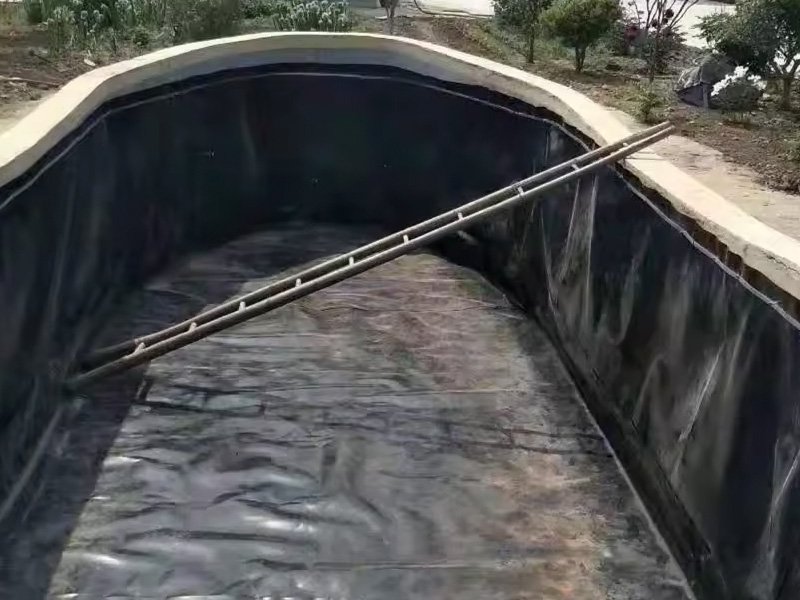

6. How To Install HDPE Polylock with Geomembrane?
To ensure a strong and sealed connection, it is important to follow the proper installation process when joining HDPE poly lock with geomembranes.
6.1 Preparation
Clean both the HDPE poly lock and geomembrane surfaces thoroughly to remove any dust, dirt, or impurities. This ensures a secure and tight connection.
6.2 Positioning the Geomembrane
Place the geomembrane in the desired location, ensuring proper alignment. Smooth out any wrinkles or folds to achieve accurate positioning.
6.3 Unrolling the HDPE poly lock
Unroll the HDPE Polylock material along the edge of the geomembrane where the connection is needed. Align and position the HDPE Polylock correctly with the geomembrane edge.
6.4 Securing the HDPE Polylock
Use mechanical fasteners like screws or nails to secure the HDPE poly lock in place along the edge of the geomembrane. Ensure the fasteners are evenly spaced for a secure attachment.
6.5 Applying Adhesive
Apply a suitable adhesive or bonding agent to the surface of the geomembrane within the DPE poly lockchannel.
6.6 Laying the Geomembrane
Carefully insert the edge of the geomembrane into the HDPE poly lockchannel, ensuring it is fully seated and in contact with the adhesive. Apply pressure along the joint’s length to ensure a proper bond.
7. Summary
HDPE poly lock is a vital component for connecting geomembranes in soil engineering and environmental protection projects. It offers numerous benefits such as preventing soil erosion, controlling water infiltration, filtering impurities, and acting as a soil barrier. By using HDPE Polylock, soil stability can be enhanced, project performance can be improved, and the environment can be safeguarded against soil pollution and erosion.
When selecting an HDPE poly lock system, it is essential to consider factors like soil type, stability, engineering requirements, and environmental conditions. These considerations ensure the chosen HDPE poly lock system is suitable and reliable for the specific project. BPM Geomembrane is a supplier that provides high-quality HDPE polylock in custom sizes and thicknesses. For any questions or inquiries, feel free to contact us.

